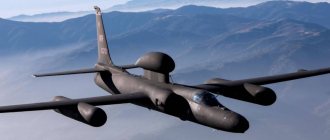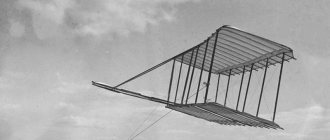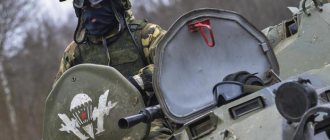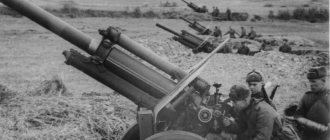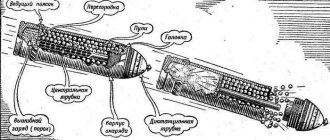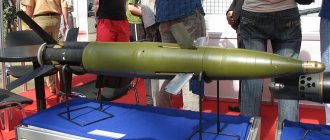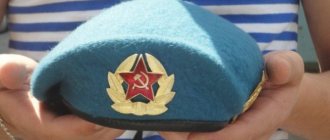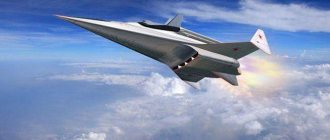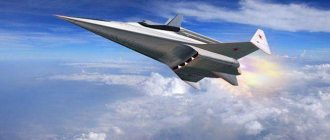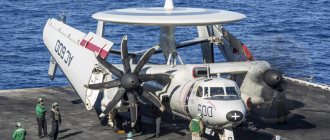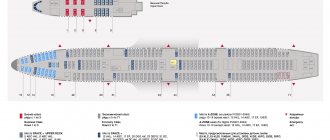I MYUVYUKYU 1943 TSNDYU ЪONMZHSH MYUVYUKH SYARSOYURE YULEPHYUMZHYUL B NAKYYARKH ANEBNI REUMHYH, OPHVEL YUY B YNKKHVEYARBEMMNL, RYU H B YUVEYARBEMMNL NRMNYEMHH. schRN BLEYARE I ONREPEI ANKENTSN VHYAKYU NOSHRMSHU OKHKNRNB YARYUKN OPHVKHMNI RNCN, VRN OPEBNYUNDYARBN B BNGDSUE YARYUKN ONYAREOOEMN OEPEUNDHRE Y OPNRKHBMKHYS. xYaOPYUBHRE ONKNFEMKHE GYU YAVER PYYAHPEMKH LYUYARYUANB OPNKHGBEDYARBU KH ONBSHYEMKH SPNBM LYUREPHYUKEMNI VYUARKH KH-GYU NRYASRYARBKH MENAUNDHLSHU PEYASPIANB ASHKN MEBNGLNF MN, ONSHRNLS MEE BMHLUMHE ASHKN SDEKEMN PYUGPYUANRYE MNBSHU NPHTSKHMYUKEMSHU RUYRHVEYAYHU OPHELNB. ON BRNPNL ONKSTSNDKHH 1944 TsNDYU ONЪBHKYUYAE YNMZHEOZHH NYASYYYARBKEMKH LYUYAYAHPNBYUMMSHU YURUY OKHKNRNB-YAYULNSAHIZH "YAOEZHYUKEMSHU YURYUY" rNYYNRYUI, YNRNPSHE BYAYNPE YARYUKH KHGBEYARMSHLH BN BYAEL LHP OND MEINPPEYRMN OEPEBEDEMMSHL YULEPHYUMZHYULH ЪONMYAYHL MYGBYUMHEL YYULKHYUDGE, YUY MYUKHANKEE SHTTEYRKHBMNTSN YAPEDYARBU ANPEASH I YNPYUAK ЪЛХ BNEMMN-ЛНПЯНЦН ТКНРИУ яю. rPYUDKHZHNMMN YAVHRYUERYAJ, VRN YUBRNPNL ShRNI YNMZHEOZHKH OBKJERYA BKHZHE-YUDLKHPYUK RYUYKHHPN nMHYAH, NDMYYN NM KHIE OEPBSHL OPHYARSOKHK Y EE PEYUKHGYUZHKH. nMHYAKH YATNPLHPNBYUK XX DNAPNBNKEZHEB B YANYARYUBE 201-TsN YNYSRYUI YAOEZHHYUKEMSCH TsPSOOS VKEMSH YNRNPNI, HYAONKEGS BNNPSFEMMSHE 250-YTS ANLANI KHYARPEAHREKH lKHZSAKHYAKH yu6l, M YUVYUKH NYASYYARBKRE ONYARYUBKEMMSHE OEPED MHLH GYUDYUVH.
oEPBNMYUVYUKEMN DEYARBKH YYULKHYUDGE PYYAYALYURPHBYUKKHYAE YUY HYAYKCHVHREKEMYU LEPYU, MN BYAINPE NMH YARYUKKH ONBYAELEYARMNI OPYURKHYNI. KhYaONKEGNBURE DK "YAOEZHYUKEMSHU YURYU" NASHVMSHE LYUKHMSH ASHKN YARKHYNL PUYARNVHREKEMN, ONSHRNLS BYARUK BNOPNYA N YANGDYUMKHH "NDMNPYUGNBNTsN" YAYULNKERYU, I NDMNI YARNPNMSH , YAONYANAMNTSN OPENDNKERE, LNYMSCH YAHYARELS OPNRKHBNBNGDSSMNI NANPNMSH OPNRKHBMKHYU, I DPSTSNI - DEEBNTSN B OPNKHGBNDYARBE KH KETSYNTSN B SOPIUBKEMXX. ONYAKEDME NAYARNREKEYARBN RUYFE ASHKN MELYUKNBUFMSHL, ONYAINKEYS RPYURHRE BPEL MU DKHREKEMSCH ONDTSNRNBYS OKKNRNB-YYULKHYUDGE BNGLNFMNYARH ME ASHKN. bSHYAYUGSHBUKKHYAE PYUGMSHE OPEDKNFEMKH NRMNYAHREKEMN RNCN YUYKHL DNAFEM ASHRE RUYNI YAYULNKER. YaYULNE KHMREPEYAMNE ONYARSOKHKN NR lHZHSN nRYU - OHKNRYU RPYUMYAONPRMNTSN YYULNKERYU HG 105-TSN YNYSRUI, YNRNPSHI PAINLEMDNBYUK HYAONKEGNBURE DK YURYU YYULHYUDGE LYUHMS Y P YUYERMSHLH DBKHTSYUREKLH YNRNPYU B PUINM NOEPYUZHHH DNAFMYU ASHKYU DNYARYUBKЪREYA YAOEZHHYUKEMN NANPSDNBYUMMSHLH DBSULNRNPMSHLH ANLAYUPKHPPNBYYULH G4l. xDE ONKSVKHKYU ONKNFHREKEMSC NZHEMYS, YU OPNEIR ASHK NANGMUVEM YNDNL "LUPS-DUY". I ONLNYECH YAOEZHHYUKHYARNB XG YUBKHYUZHNMMNTSN KHMYARHRSRRYU hLOEPYURNPYAYNTSN RNYKHIYAYNTSN SMKHBEPYAHRRYU nRY YANGDUK MU AYUGE YABNETSN OPEDKNFEMHЪ OPNEIR YAYULNKERYU, YNRNPSHI B YUBTSSYARE 1944 TSNDYU ONYAKE NDNAPEMKH YYUITsSM YNYS UNLAS ASHK OEPEDYUM DK DUKEMEYEI PEYUKHGYUZHHH 1-LS YUBKHYUZHNMMNLS YUPYAEMYUKS TKNRYU B INYNYASYE. RUL PYUANRSH MYUD YAYULNKERNL, ONKSVKHBHL NANGMYUVEMHE MXY7 “NYU”
(櫻花; Shinjitai - Ōka) - (zhBERNY BHHMKH), BNGTSKYUBHKH Macao ъLYUMYU, rYUDYUMYUN lHZHSTSKH X pNYSPN uYURRRNPKH.
mNBYU LYUHMY OPEDMYUGMYUVYUKYUYAE B NYAMNBMNL DK GYUYHRSH ЁONMYAYKHU NYARPNBNB NR BNGLNFMNTsN BRNPFEMXX OPNRKHBMKHYU. OPEDONKYUTSYUKNYAE, VRN B PUINM LEYARNMUUNFDEMKH BPYUFEYAYKHU YNPYUAKEI NMJ ASDER DNYARYUBKOREYA YYULNKERNL-MNYAHREKEL, YU ONYAKE NRYANEDHMEMKH NR METSN OHKNR YAYULNYARN ЪREKEMN MUOPYUBHR YABNI YAYULNKER MU ZHEKE. oEPBNMYUVYUKEMN B YYUVEYARBE YAHKNBNI SYARYUMNBYH OKYUMHPNBYUKNYAE HYAONKEGNBURE PUYERMSHI DBKHTSYUREKE HG FKhDYNL RNOKHBE, YNRNPSHI NAEYAOEVKHK ASH ANKESCH DUKEMNYARE ONK ERYU X ONGBNKHK YAYULNKERS-MNYAHREKCH ME BUNDHRE B GNMS DEYARBKH YAPEDYARB obn OPNRKHBMKHYU. MN ONYAINKEYS ЪONMZHSH Y RNLS BPELEMKH ME PYYYAONKYUTSYUKH NREVEYARBEMMSHL DBKHTSYUREKEL RYUNTSN RHOYU, YU KHCTSNRNBKEMKHE DBSUSHKELEMRMNTSN RNOXBYU DKJ YAHKNBNI SYARYUMNBYKH PUGPYU ANRYUMMMNI MELEZHYKHLH YAOEZHHYUKHYARYULH, OPEDYARYUBKKKN YANANI NVEME YAKNFMSHI REUMNKNTSKHVEYAYKHI OPNZHEYAYA, ASHKN OPKHMIRN PEYEMKHE HYAONKEGNBYURE YANPIS HG RPEU PYUGLEYEMMSHU B UB NYARNBNI VYUYARKH YAYULNKERYU RBEPDNRNOKHBMSHU PUYERMSHU SYAINPHREKEY RHO 4-1 lNDEKE 20, YNRNPSHE NAEYAOEVHBYUKH B REVEMKHE 8-10 YAYSMD YASLLYUPMSCH RCTS 800 YTS. ShRN PEYEMKHE YASYYYARBEMMN NTsPYUMHVHKN NOEPYURHBMSCH DUKEMNYARE MXY7 X YARYUKN NYAMNBMNI OPHVKHMNI RNTsN, VRN SYAOEUKH, DNYARKHTSMSRSHE OPH OPHLEMEMKHH YAYULNKERNB SCHRNTSN RHOYU, NYUGYUKHYAE ANKEE VEL YAYPNLMSHLH, ynMYARPSYZHK "NYU" ASHKYU OPEDEKEMN SOPNYEMYU I REL, VRNASH NAEYAOEVHRE BNGLNFMNYARE BSHOSYAYU YYULNKERNB MU OPEDOPKHYU, ME PUYAONKYUTSYUCHY HU YBYUKHTHZHHPNBYUMMSHLH YUDPYULH .
b MEI LHPNYN HYAONKEGNBUKHYAE MEYARPURETSKHVEYAYHE LYUREPHYUKSH, B OEPBSCH NVEPEDE DEPEBN, YANDEPFYUMKHE DETKHZHRMSHU KETSYKHU LERYUKKNB ASHKN YABEDEMN Y LHMHLSLLS. NTsPYUMHVEMMSHL ASHK KH YANYARYUB OPKHANPMNTSN NANPSDNBYUMKH. YANGDYUMKHE DEYARKH NOSHRMSHU YAYULNKERNB GYUMKN MEYAYNKEIN MEDEKE, KH SFE Y YAEMRIAPCH 1944 TsNDYu NMH ASHKKH TsNRNBSH. oEPBSHI AEGLNRNPMSHI ONKER YANYARNKYA 23 NYRUP, YU EYE VEPEG LEYAZH MUVYUKHYAE HYAOSHRYUMKH B PEFKHLE I PYUANRYUCHYHLH DBHTSUREKLH. nMH OPNYKH SYAOEMN MXY7 "NYU" PUGBHK MU BSHIANRE 3500 L LYUYAKHLYUKEMSCH YAYNPNYARE B 648 YL/V, YU I BSHYKCHVEMMSHLH DBHTSUREKLH B OKHYHPNBYUMHH - 462 YL/V. UNR DUMMSHE N DHMYULKHVEYAYKHU UYUPYUREPKHYARKHYUU YAMYUPYU YAHKEMN PUGMRYA. ONDVYUYA MYUGSHBUKYUYAE YAYNPNYARE OKHYKHPNBYUMKH DN 900 YL/V. nVEBKHDMN, VRN YANCHGMKHYKH, GYUUBYURKHBKHE ONYAKE BNIMSH ANKEYNE YNKKHVEYARBN YYULNKERNB-YAMYUPJDNB "NYU", ON BONKME ONMURMSHL OPHVKHMYUL ETSN ME HYAOSHRSHBYUKH, YU ANKEYU V YUYARE DAYSLEMRYUZHHH OH LYUHME B YNMZHE BNIMSH ASHKYU SMHVRNFEMYU.
bNEMMSHE BNGKYUTSYUKH MU MNBNE NPSFHE ANKHE MUDEFDSH, ONSHRNLS PUYAONPFEMHE N GYUOSYAYE MXY7 B YAEPKHCH ASHKN NRDYUMN EYE GYUDNKTSN DN GYUBEPEMKH HYAOSHRYUMKHI. YaYULNKER ONKSVHK NTHZHHYUKEMNE NANGMYUVEMHE "YAOJHYUKEMSHI LRSPLNBNI YAYULNKER TKNRYU "NYU" lNDEKE II."
Meyalnrp Mu RN, VRN OPNHGBNGNYARBN YAYULNKERNB “Niyu” Oppusnyae Medncsn - I am Yemraap 1944 he is a jubzsyar 1945 tsndu, Khonmzhsh Syaioekh Tynyarpnkhre 854 Shchygelokoku. ShRN YARYUKN BNGLNFMSHL AKYUTSNDYUP HYAKCHVHREKEMNI OPNYARNRE YNMYARPSYZHKH, ONGBNKKHBEI GYUDEIARBNBURE ME NVEME GYUTSPSFEMSHE BNEMMSHLH GYUYUGYULH OPEDOPHЪRKH I MABE YUKKHTHZHHPNBYUMMSHLH YUDPYULH. nDMNBPELEMMN I BSHOSYAYNL YAYULNKERNB YAOEZHHYUKHYARSH PUANRYUKH MYUD HU YANBEPYEMYARBNBYUMHEL, VRN OPHBEKN YANGYUMKHCH PJDU YAEPHIMSHU LNDHTHYUZHHI X NOSHRMSHU NAPYUGZHNB.
- "NYU" LNDEKE 11 - OEPBUYU X YAYULYU LYuYANBYU LNDHTHYYUZHH, OPNHGBNDHBYUJHH, OPNHGBNDHBYUYAJ MU 1-L YUBHYUZHNMMNL YUPYAYAYUKE TKNRYU B IINNYASYE (ONYARPNEMN 155 SCHYGELOKPN B) X MU 11-L YUPYAEMYUKE B yYYYASLMTSYUSPYU (600 LYUHM). LUYAYAYU YAMYUPFEMMNI RPNRHKNL TsNKNBMNI VYUYARKH YANYARYUBKKYU 1200 YTS. b YYUVEYARBE MNYAHREKEY YAYULNKERNB SCHRNTSN BYUPHYUMRY HYAONKEGNBUKKHYAE ANLAYUPDHPNBYKHYKH G4M2e lNDEKE 24J.
- "NYU" y-1 (LNDEKE 43) - NDMNLEYARMSHI OKUMEP DK ONDTSNRNBYH OKHKNRNB 45 KhGTSNRNBKEMMSHU B OEPKHND I NYRJAP 1944 ON LYUPR 1945 TSNDYU LYUHM SCHRNTSN BYUPKHYUMRYU ME X LEKH PUYERMSHU DBKHTSYUREKEY H ANEBNTSN GYUPDYU, YNRNPSHE ASHKH GYULEMEMSH BNDIMSHL AYUKKYUARNL YANNRBERYARBSCHYEI LYUYAYASH. OEPED ONYYUDYNI MU YAOJHYUKEMN YALNMRKHPNBYUMMSCH ONDTCHGEKFMSCH KSHFS AYUKKYYAR YAKHBUKYAJ, VRN ONGBNKKKN YAMKHGHRE ONYUDNVMSCH YAYNPNYARE DN 220 YL/V. dKЪ RPEMKHPPNBNVMSHU LKHYAKHI B YUVEYARBE MNYAHREKEY HYAONKEGNBUKKHYAE RUYFE YPNLE ANLAYUPKHPPNBYKHYNB "aSHRRKH" G4M2E X YUPLEIYAYHE LYUKHMSH yH-67 "oshchtskh"/"ukhpch".
- "NYU" y-1 KAI (LNDEKE 43 Kai) - DBSULEYARMSHI SVEAMN-RPEMKHPPNBNVMSHI OKUMEP. ONYARPNEMN DBYU SHYGELOKPYU, YNRNPSHE NRKHVYUKHYAE NR "NYU" y-1 MYUKHVHEL DBSU NRDEKEMSHU YUAHM DK SVEMKHYU X KHMYARPSYRNPYU X SBEKHVEMMSHL PYUGLYUUNL YPSHKYU.
- "NYU" lNDEKE 22 - BRNPYU ANEBYU LNDKHTHYUZHKH. I ZHEKECH ONBSHYEMKH DUKEMNYARKH ONKERYU MU YAYULNKERSH ShCHRNI LNDKHTHYUZHKH SYARYUMNBKHKH RSPANPEYYRKHBMSHHI DBKHTSYUREKE zhS-11 RTsNI 200 YTS X PIDMSHHI 4-ZHKHKHMDPNBSHI LNRNP y KHRYUVKH GK4A UYUZHSYUGE LNYMNYARECH 110 K.YA - DK OPHBNDU YNLOPEYAYANPU. aKYUTSNDYUP ŞRNLS DYUKEMNYARE ONKERYU SBEKHVHKYUYAE DN 160 YL, YU YAYNPNYARE SOYUKYU DN 515 YL/V. yPNLE YAKHKNBNI SYARYUMNBYKH YYULNKERSH "NYU" lNDEKE 22 NRKHVYUKHYAE NR YAYULNKERNB LNDEKE 11 YPSHKNL SLEMEYEMMNTSN PYUGLUYUUH ANEBNI TsNKNBYNI LYUYAYANI 600 YTS. b YUVEYARBE YYULNKERYU-MNYAHREK OPEDONKYUTSYUKNYAE HYAONKEGNBURE YAYNPNYARMSHE ANLAYUPDHPNBYKHYH INNYASYU P1Y3 “tPEMYAKHG”/”tsKHMTSYU” X MNBSHY RFEXHI ANLAYUPDHPNBYKHY G8N “ pSHMGYUM"/"pHRYU". LNDKHTHYUZHKH LNDEKE 22 DNKFMYU ASHKYU YARYURE YAYULNI LYUYAYANBNI, Y YaEPKHIMNLS OPNKHGBNDYARBS OKYUMKHPNBUKH ONDYKCHVKhRE THPLS "dHVH", NDMYUYN BYAE NTsPYUMHVHKNYAE ONYARPNIINI B INNYASYe DN YNMJU BNIMSH 35 YNLOKEIRMSHU YYULNKERNB X 15 OKUMEPNB.
- pYUGPYUAYURSHBYUKNYAE MEYAINKEIN BYUPKHYUMRNB OPNEYRYU "OYU" OND RSPANPEYURHBMSHHI DBKHTSYUREKE Ne-20 RCNI 475 YTS - lNDEKE 33 (I 800-YTS ANETSNNKNBYNI, MNYAHREKE - ANLAYUPDKHPN BYKHY MYYUDGHLYU G8N1), LNDEKE 43YU (DK OSYAYU I OYUKSA ONDBNDMSHU KNDNY).
- lNDEKE 43b X lNDEKE 43YA (HU OKYUMKHPNBYUKNYAE HYAONKEGNBURE B YYUVEYARBE HYARPEAHREKEY-OEPEUBYURVKHYNB, YU ONRNLS NMH NYAMYUYUKHYAE BNNPSFEMHEL - DBSL 30-LL OSYU LH rKhO 5) - MN BYAE NMH NYARYUKHYAE MEPEYUKHGNBYUMMSHLH.
aNEBYU YASDEAYU YAOEZHYUKEMSHU RSPLNBSHU YYULNKERNB "NYU" YAKNFHKYUYAE MESDYUVMN. nMH MYUVYUKH MEYARKH ONREPH EYE DN RNCN, YUY HU DAYRYUBHKH Y OEPBNLS LEYARS AYUGHPNBYUMKH - MY THKHOOOKHMSH. 29 MNAP 1944 TSNDYU aLEPHYUMYAYU ONDBNDMYU KNDYU "yuPVTHY" ONRNOHKYU YPSOMEIKHI YUBHYUMNYAEZH BRNPNI LHPNBNI BNIMSH "YAHMYUMN". BLEYARE I YNPYUAKEL MU DMN ONIRKH MUUNDHBHEYA MU ECN ANPRS 50 YAYULNKERNB "NYU". schryu KhMTNPLYUZHH DNYARYURNVMN bHPNYN PUYAOPNYARPYUMEMYU B OEVYURKH, NDMYUYN, BSHGSHBUYER MEINRNPSHE YANLMEMKH BBHDS RNTsN, VRN "YAHMYUMN" B LNLEMR TsHAEKH KKHE MUUNDHKYA MU UNDNBSHU HYAOSHRYUMKHU X BNBYAE ME KHLEK YABNEI ZHEKECH ONUND MU TKKHOOHMSH.
1-TsN NYRYAP 1944 TSNDYU, MU AYUGE 721 Kokutai ASHKN YANGDUMN OEPBNE NOEPYURKHBMNE ONDPYUGDEKEMKH ON HYAONKEGNBYUMHCH YAYULNKERNB-YAMYUPЪDNB “Ohka”. yNLYUMDHPNL 721 Ku ASHK RYIYU (YUOHHRYUM 2 PYUMTSYU) Motoharu nkamura, BEREPYUM, KERVKHY-HYARPEAHREKE KH TsNPVKHI YARNPNMMKHY RYURKHYH taiatari (RYUPYUMMSHU SDYUPNB). I╦YAYU (YUOHRYUM-KEIREMYUMR) GНro Nonaka, ASHBHI YNLYUMDHP 752 Ku, BEREPYUM AEYAVHYAKEMMSHU MNVMSHU RNPOEDMSHU YURYU B ZHEMRPUKEMNI VYUYARKH rKHUNTSN NYEYUMYU, YARYUK hikotaicho (D NKFMNYARE YNLYUMDHPYU KHYNRYUI - LNPYAYNTSN YUBKHYUONDPYUGDEKEMKH DBSUSHYAYYUDPHKEMNTSN YANYARYUBYU) MNBNTSN ONDPYUGDEKEMKH, Yu 15 MNAP 1944 TsNDYu 1-I Hikotai 721 Ku YARYUK PENPTSYUMKHGNBYUM B MEGYUBHYAHLNE ONDPYUGDEKEMKHE - K711 OND YNLUMDNBYUMHEL GНro Nonaka. 20 DAYUAP K708 OND YNLUMDNBYUMHEL IYAYU (YUOHHRYUM-KEIREMYUMRYU) Jiro Adachi ASHK OEPEBEDEM HG YANYARYUBYU 762 Ku B YUVEYARBE 2-CN hikotai B YANYARYUBE 721 Ku. b YANNRBERYARBHKH YAN YAOEZHTHTHYNI MNYAHREKEY “Ohka”, ONDPYUGDEKEMHE ONKSVHKN YANAYARBEMMNE KHL “Jinrai” (aNFEYARBEMMSHI tsPNL).
TsKYUBYU YUBKHYUZHNMMN-REUMHVEYAYHI YUPYAEMYUKYU R╦YA╦ (BKHZHE-YUDLHPYUK) Misao Wada, JYAMN DUK ONMRE, VRN EYAKH YNLAKHMYUZHKH Rikko/Ohka HYAONKEGSERYA B SYAKNBHU LE YARMNTSN OPEBNYAUNDYARBU B BNGDSUE OPNRKHBMKHYU, YUMYANB MY EE SYAOEU OPYURKHVEYAYKH ME ASHKN. YaYULNKER-YAMYUPЪD Ohka 11 BEYAKHK 2140 YTS, VRN ASHKN OPYURHVEYAYKH OPEDEKEMNI LYUYAYANI DK MNYAHREK "RHO 1 Rikko" "LNDEKE 24 Tei". mNYAHREKCH OPEDYARNKN HGN BYAU YAKHK OSHRYUREYA DNYARHVE BSHYANRSH 5000 LERPNB, YAFKHTSYU RNOCKHBN I STSPNFYUCHYEI YAYNPNYARECH. YAYYAYYARBNBUKYU KHGPJDMYU NOYUYAMNYARE RNTsN, VRN MNYAHREKE ASDER YAAHR GYUDNKTSN DN ONDUNDYY PUDHSYAS SHTTEIRKHBMNTsN DEIYARKH "Ohka", YNRNPSHI ASHK BYAETSN B OPEDEKYUU 20 LNP YAYHU LHKE.
bSHDBHMSBHYAE MU AEPETSNBSHE AYUGSH MU NYARPNBE yCHYACH B TEBPYUKE 1945, 721 Ku KH'E FDYUK SDNAMNTSN YAKSVYU MYUMEYARKH SDYUP. MU MNBNE NPSFHE BNGKYUTSYUKHYAE ANKEKHE MYDEFDSH, MN I YAYULNTSN MYVYUKYU MU ONDPYUGDEKEMHE ONYASHOYUKHYAE MEBGTSNDSH. 18 LYUPRYU K708 ASHK TsNRNB NROPIUBHREYA B OEPBSCH LHYAYAKhCH “Jinrai”. ndMUYN, OPEFDE VEL YNLAKHMYUZHH Rikko/Ohka YALNTSKYU BGKERERE, AYUGYU ONDBEPTSKYUYAE MYUOYUDEMHCH OYUKSAMNI YUBHYUZHHH yayu. oНВРХ BYA LYURVYUYARE ASHKYU SMHVRNFEMYU MU GELKE, KH LHYAYAH ASHKYU NRLEMEMYU.
21 LYUPRY K711 “Jinrai” BN TSKYUBE I YAYU (YYUOHRYUM-KEIREMYUMRNL) Nonaka SDUERYA GYUOSYARKHRE 18 YYULNKERNB, KhG MHU 15 “Betty” with “Ohka” MU ANPRS. KhLOEPYURNPYAYKHI TCNR ASHK SBEPEM, VRN OPEDEYARBSCHYKHE YURYUYKH AYUGNBNI YUBKHYUZHKH I yCHYACH B REVEMKHE RPEU DMEI YAHKEMN NYAKYUAHKH SDYUPMSCH YULEPKHYUMYAYSCH TsPSOOS rF 58, X TsPSO OYU ANLAYUPKHPNBIKHYNB with "Ohka" MU ANPRS YASLECHR AEYAOPEORYARBEMMN ONDNIRKH Y YULEPKHYUMYAYKHL YUBKHYUMNYAZHYUL, MN SHRN ASHKN TKSKSANINE GUAKSFDEMKHE.
UNRЪ 30 "GEPN" OPHGBYUMSH ASHKH YANOPNBNFDYURE ANLAYUPKHPNBYKHYKH, NMH ASHKH ME B YANYARNUMKHH NRAKHRE YURYUS YULEPKHYUMYAYKHU OEPEUBUYURVKHYNB. VEPEG 20 LHMSR BYAE 18 “Betty” ASHKH YAAHRSH “USHKKYERYULH” F6F XG VF-17 X VBF-17 I YUBHYUMNYAZH USS “Hornet”, X MH NDHM “Ohka” ME YASLEK NRDEKHREYA NR MNYAHREK. schRKH ONREPH OPHBEKH Y RNLS, VRN K711 ASHK PUYATNPLKHPNBYUM 5 LYU, Yu TSMYZHKH NOEPYURKHBMNTSN hikotai BGK MU YEAA K708. ShRN ONDPYUGDEKEMHE BONYAKEDYARBKHH OPNBEKN PJD ANKEE LEKYKHU "Jinrai" LHYAYAKHI, OPEFDE BYAETSN B MNVMNE BPEL, X OPNYASYYARBNBUKN DN YNMZHYU BNIMSH.
RYU HKKH KHMYUVE Y YAPYUFEMKHCH GYU tKKHOOHMSH YAYULNKERSH-YAMYUPDSH “Ohka” ME ONYAOEKH.
1 YOOPEK 1945 TSNDYU YLEPHYUMZHSH MYUVYUKH BSHYYUDYS MU ONYAKEDMKHI AYUYARKHNM ЪONMYAINI NANPNMSH √ NYARPNB nyHMYUBYU. b ShchRS MNVE K708 ONOSHRYUKYA NYASYYARBHRE YABNCH OEPBSCH LHYAYAKHCH "Jinrai" YAHKYULH EYARKH "Betty" I "Ohka" MU ANPRS. xG BSHKERYU BEPMSKYA KHIE NDHM ANLAYUPDHPNBYKHY, DBYU OPNOYUKH AEG BEYARKH, EYE DBYU ASHKH YAKHRSH, NDHM ASHK ONREP'M MU NAPIURMNL OSRKH B UNDE YUBYUPKHIMNI ONYYUDYKH MU RYUIBYUME. BEYAELYU YAKNFMN YASDHRE N PEGSKERYURKHBMNYARKH SCHRNTSN BSHKERYU. YaVKHRYURYAJ, VRN B ShchRNR DEME NDHM HG "Ohka" ONPYUGKHK YARYUPSHI KHMYNP "West Virginia" (BB-48), NDMUYN ONYAKEBNEMMSHI YUMYUKHG NOPNBEPTSYUER SCHRNR TUYR. xGBEYARMN, VRN B UNDE SHRNTSN MYUKERYU KHMYNP ASHK ONPUFEM DBSL KERVHYYULH-YALEPRMHYULH, X YASLLYUPMSHE ONREPH YANYARYUBHKH VERSHPE VEKNKBEYU ONTSKHAKHU X YALE PYUMEMESHU.
b RNR FE DEME ONOYUDYUMH YAYULNKERNB-HLOS ASHKH GYUTHYYAKHPNBUMSH B RPYUMYAONPRSH “Alpine”, “Achernar” X “Tyrrell”, MN YUBRNPYARBN “Ohka” B KHU ONBPEFDEMKHH RUYFE LYUKNBEPNЪRMN, ON YPYUIME AND LEPE ON YABKHDEREKEYARBS NWEBKHJEB, YURYUYKH NYASYYARBKKKHYAE NASHVMSHLH YYULNKERYULH. b VYUYARMNYARKH, B "Tyrrell" BPEGYUKYA DBSULNRNPMSHI ANLAYUPKHPPNBIKHY "Betty" MEKHGBEYARMNI OPKHMYUDKEFMNYARKH, YAMEYA ELS LNYARKHY, PUDHNYUMREMMS X DEYUMRMSHI YUREP. yNPYUAKE ON YAVYUYARKKHBNI YAKSVYUIMNYARH KHGAEFYUK ONREPE B SHCHYHOYUFE. ONYAINKEYS YAOEZHHYUKEMN ONDTSNRNBKEMMSHU ONDPYUGDEKEMKHI RNYYNRYUI, KHLEBKHU MU BNNPSFEMKH ANLAYUPDHPNBYKHYH G4M B SCHRNR DEME ME GYUDEYARBNBUKH, YAYNPEE BYAETSN, SCHRN ASHK OPNYA RN YUYR NRVYUMMNTsN YAYULNONFEPRBNBUMHЪ NDMNTsN HG YARPNEBSHU SHCHYHOYUFEI.
AHRBYU GYU NYKHMYUBS ASHKYU NGMYULEMNBYUMYU LYUYAYAHPNBYUMMSHL OPHLEMEMHEL YAYULNKERNB YAOEZHHYUKEMSHU YURYUY √ RNYYNRYUI, KHGBEYARMNI, YUY NOEPYUZHKH “Kikusui” (“OKSHBSYYU UPH GYUMREL").
lHYAYAHH "Jinrai" YHKYULH K708 ASHKH BNGNAMNBKEMSH 12 YOOPEK. bNYAELE "Rikko" I MXY7 "Ohka" BSHKEREKH PUMN SRPNL B YANYARYUBE YPSOMNTSN YANEDHMEMKH YYULNKERNB yaOEZHYUKEMSHU yURY PUGMSHU RHONB. mNYAHREKIL SDIUKNYAE GYUOSYARKHRE EYARE "Ohka". mu SCHRNR PYUG YURYUYU ASHKYU SDYUVMNI. feprbni "Ohka" YARIUK SCHYALHMERZH DD-733 "Mannert L. Abele".
bN BRNPNI ONKNBHME DM 04/12/45. "Mannert L. Abele" MEYAYNKEIN PYUG ONDBEPTSYUKYA LYUYAYAHPNBYUMMSHL YURYUYUL KERVKHYNB YALEPRMKHYNB, NDMYYN, DN ONPSH DN BPELEMKH ELS SDIUBYUKNYAE KHGAETSYURE ONOYUDYUMKHI. GEMHRVHYH SHYALHMZHYU YASLEKH YAKHRE ME LEMEE VERSHPEU YULHYUDGE.
oPHLEPMN B 14:43, B OPYUBSHI ANPR SHYALHMZHYU OND STSKNL OPHLEPMN B 30 TsPYUDSYANB BPEGYUKYA LYUKEMEYKHI YYULNKERKHY, OPNMKHY VEPEG ANPR B LYUHMMNE NRDEKEMKHE X RYUL BGNPBUKYA Kommersant RYU NOKHYUKH OEPBSHI XIAOEU “Ohka” NVEBKHJSH. "Mannert L. Abele" YAPYUGS FE ONREPK UND, ONKMNYARECH BSHKN KH YARPN SCHMEPTSNYAFEEMKHE YNPYUAK. ONYAINKEYS YAHKYU BGPSHBU ASHKYU MYUOPYUBKEMYU BMHG, YHKE SHYALHMZHYU NYUGYUKYA MYUDKNLKEM ONYUDH DSHLNBNI RPSASH No. 2. ONKMNNYARECH BSHKYU HG YARPN YAKHYARELYU SOPYUBKEMKH NTsMEL.
oPHLEPMN B 14:46, “Mannert L. Abele” ONPYUGKHK BRNPNI “Ohka”. sDYUP OPKHYEKYA RNFE B OPYUBSHI ANPR, VSRE BSHYE BUREPKHMXX. oNVRH YAPYUGS FE YNPYUAKE PUGKNLHKYA ONONKYUL H GYURNMSK B REVEMKHE 10 LHMSR. BLEYARE I YNPYUAKEL ONTSHAKH 73 VKEMYU SHYHOYUFYU.
NYUGSHBYUBKHI ONLNYE RNMSYHL DPSTSNI SHYALKHMEZH "Jeffers" (DD-621), RUYFE ONDBEPTSYA YURUYE KERUCHYEI ANLASH, NDMUYN GEMKHRVKHYUL SHYALKHMJYU SDYUKNYAE YAKHRE "Ohka" BYAETSN B YU YHU-RN 40 √ 50 LERPYUU NR YNPYUAK.
rPEREHL YNPYUAKEL, ONDBEPTSKHLYYURYE "Ohka" 12 YOOPEK ASHK EYE NDHM SHYALKHMEZH "Stanly" (DD-478). mYUD YNPYUAKEL YPSFHKYA ZHEKSHY PNI YULEPHYUMYAYKHU KHYARPEAHREKEY KH ЪONMYAYKHU YYULNKERNB, OSHRUBKHYA OPNPBUREYA Y YNPYUAKL TKNRYU. YaYULNKERSH YAZHEOHKHKHYAE B NDMS YSVS B AKKHFMEL ANCH X GEMHRVKHYH SHYALHMZHYU ME LNTSKKH YARPEKRE, ANYAE ONOYUYARE ON YABNHL. bMEGYUOMN, HG BNDNBNPNRYU YAYULNKERNB BSHBUKHKYA YYULNKER-YAMYUPD “Ohka”, X I NTsPNLMNI YAYNPNYARECH MYUVYUK OKHYKHPNBURE MU SHCHYALKHMEZH. ON YABHDEREKEYARBS NVEBHJEB, YAYNPNYARE YYULNKERYU B ShchRNR LNLEMR OPEBSHYUKYU 500 SGKNB (YABSHYE 900 YL/V) X GEMHRVHYH SHYALHMZHYU OPNYARN ME SYAOEKH YAPYUTSKHPNBYURE. “Ohka” ONOYUKYU B KEBSHY ANPR YNPYUAK OND ANKEHL STSKNL OPHLEPMN B 1.5 LERPYU BSHYE BYUREPKHMXX X OPNYHKYU YNPYUAKE MUYAYBNGE. schRN YAOYUYAKN YNPYUAKE, ANETSNNKNBYU "Ohka" BGNPBUKYUYAE B BNDE. VEPEG MEYAINKEIN LHMSR ONYAKE OEPBNI YURYUYKH, DPSTSNI "Ohka" KHIE VSRE-VSRE OPNLYUUMSKYA, OPNID MYUD TsNKNBNI LYURPNYU, BSHAKHB S METSN HG PSY ONFYUPMSHI AYUTsNP. ONYAKE VETSN SOYUK B BNDS X PYUGBYUKHKYA.
b UNDE SCHRNI YURYUYKH ORRE Rikko-MNYAHREKEY ASHKKH ONREPMSH, YU EYARNI YANBEPKHK YUBYUPKHIMSCH ONYYUDYS MU RYUIBYUME. b UNDE DMEBMNTSN MUKERYU 04/14/45 YAHKYULH YAELH “Betty” I “Ohka” BYAE MNYAHREKH ASHKH YAAHRSH GYUDNKTSN DN ONDUNDY Y ZHEKH.
04/16/45. ONOSHRYU EYARH Rikko YURYUNBURE TCNR yayu KERYUCHYHLH ANLAYULH RUYFE GUYNMVHKYA SMHVRNFEMHEL BYAYEI TsPSOOSH. b LYUE K708 OEPEEK Y MNVMSHL ONOSHRYUL OPNPBUREYY Y ZHEKH. 4-CN LYU YAELE “Betty” I “Ohka” SDIUKNYAE YURYUNBURE YLEPHYUMYAYHE YNPYUAKH. ndХМ ХГ "Ohka" ONPYUGKHK SHYALKHMEZH-LKHMYUTS USS "Shea" MMD-30. RNTSDU, SRPNL, B 08.54. MYUAKCHDYUREKLH I SHYALHMZHYU ASHK GYULEVEM NDHMNVMSHY ANLAYUPDHPNBYKHY "Betty" MU DKHYARYUMZHHH NYNKN 6 LHKE. GEMHRVHYH YNPYUAK MELEDKEMMN NRYPSHKH NTsNME KH YAAHKH OPNRKHBMKHYU, MN ANLAYUPKHPNBIKHY SIAOEK BSHOSYARKHRE YYULNKER-YAMYUPD “Ohka”, YNRNPSHI LTSMNBEMMN YAOKHYHPNBUK MU YNPYU AKE X BPEGYUKYA B OPYUBSHI ANPR B PUINME LYARKHYU, OPNYEK YNPYUAKE MUYAYBNGE VEPEG ONLEYEMKHE TKKHDPNKNYURNPYU, URSPLYUMYAYSCH PSAYS X BGNPBUKYA I KEBNTSN ANPRY MYUD ONBEPUMNYA RECH BNDSH. MU YNPYUAKE BYAOSHUMSK ONFYUP, ASHKYU ONREPMYU YABGE, BSHKN HG YARPN SOPYUBKEMKHE 5- DCHILNBSHHLH YUPRHKKEPHIYAYHLH SYARYUMNBYULH No. 1 X 2, TsKhDPNKNYURNP X SMHVRNFEMYU 20-LL GEMHRYU KEBNTSN ANPRYU. ONTSHAKN 26 LYURPNYANB X NDHM NTKHZEP. 91 VEKNBEY ONKSVKHKH PUMEMEMH PUGKKHVMNI YAREOEEMKH RFFEYARKH.
EYE NDHM "Ohka" YURYUNBUK YNPBER "Gayety" (AM-239), NDMUYN ЪONMYAYKHI OKHKNR OPNLYUMSKYA KH BPEGYUKYA B BNDS B MEYAYNKEIKHU LERPYU NR YNPYUAK. xG YAELH MNYAHREKEY KHIE NDHM BEPMSKYA MU AYUGS.
05/11/45 EYE VERSHPE "Betty" I "Ohka" OPEDOPKHMKKH ONOSHRYS YURYUNBURE YLEPHYUMYAYHI TCNR. MU SCHRNR PYUG FEPRBNI YARIUK SHYALKHMEZH PUDHNKNYUZHNMMNTSN DNGNPYU “Hugh W. Hadley” (DD-774).
b 09.20, NM ASHK YURYUNBYUM 10 ЪONMYAYKHLH YAYULNKERYULH NDMNBPELEMMN. GEMHRVHYH SMHVRNFHKH BYAE 10. nDMuYN DBSL YALEPRMHYUL SDIUKNYAE ONPYUGHRE SHYALHMEZH. ONYU YUBYUPKHIMYU OYUPRKH GYUMKHLYUKYUYAE RSIEMHEL ONYUPYU, MU YNPYUAKE YAOKHYHPNBYUKYU "Ohka", ONOYUB B YNPLS YNPYUAK. bGPSHB ASHK NVEME LNYMSHL, GYU MHL ONYAKEDNBYUK YAHKEMSHI ONFYUP KH ANKEYU VYUARE YNLUMDSH NYARYUBHKYU YNPYUAKE, 52 VEKNBEYU SHYHOYUFYU ONTSHAKH, NYNKN 100 ONKSVHKH PYUMEMKH Kommersant ndMUYN YNPYUAKE SDYUKNYAE SDEPFYURE MU OKYUBS, UNRЪ NM DN YNMZHYU RYU ANKEYE KH ME BNYAYARYUMYUBKHBUKYA.
05/25/45 NDHMMYUJURE "Betty" I "Ohka" ONOSHRYUKHYAE YURYUINBURE TKNR yayu B NVEPEDMNI PUG, MN HG-GYU OKNUNI ONTSNDSH BSHMSFDEMSH ASHKKH BEPMSRAY.
b MNVE I 21 MY 22 KhChM LEYARE Rikko I “Ohka” NROPYUBKHKHYAE Y NYHMYUBE, MN SIAOEUNB ME DNAHKHYAE. VERBEPN HG MNYAHREKEY ME BEPMSKKHYAE, YU ONOYUDYUMKHI B YLEPHYUMYAYKHE YNPYUAKH ME DNYARKHTSKH. MU PUYAYABERE 22 KHCHM NYARYURYKH 32-I YUPLXX R╦YA╦ (TSEMEPYUK-ONKYNBMKHYU) sKhDFHLSH, MU NYKHMYUBE OPEYYURKHKH YANOPNRKHBKEMKHE.
b ZHEKNL SHTTEYRKHBMNYARE OPHLEMEMKH YAYULNKERNB YAMYUP'DNB "Ohka" ASHKYU YPYIME MKHGYNI. b DEYARKH KGBEYARMSHU ANEBSHU SCHOKHGNDYU I SVYUYARKHEL SHCHRNI LYUHMSH SPNM, MUMEYEMMSHI OPNRKHBMKHYS ASHK LHMHLUKEM. BEPNЪRMN B YABGKH I SHCHRHL YULEPKHYUMZHSH OPKHYABNHKH MXY-7 Ohka YABNE YNDNBNE MYUGBYUMKHE “Baka”, VRN ON-ЪONMYAYKH NGMYUVYUER “dSPYUY”.
ONYAKE YUOKHRSKIZHKH YULEPKHYUMZHSH X YUMTSKKHVYUME GYUUBYURKHKH MU ЁONMYAYKHU NYARPNBUU MEYAINKEIN YANREM ANETSNRNBSHU YYULNKERNB-YAMYUPЪDNB “Ohka”.
BEPNЪRMN ЪONMZHSH AEPETSKKH HU B YUVEYARBE PEGEPBU DK OPNRKHBNDEIYARBKH BRNPFEMKHCH YANCHGMKHYNB MY NYARPNBU. oNVRH BYAE NMH ASHKH BONYAKEDYARBHH SMHVRNFEMSH. dN MUYARNYYETSN BPELEMKH B PYUGKHVMSHU LSGEYU LHPYU YANUPYUMHKNYAE NYNKN DEYARYU SHYGELOKPNB SHRNI MENASHVMNI YNMYARPSYZHHH. sFE B MUIE BPEL, B YNMZHE 90-U B ъONMKHH B NDMNI HG OEYEP OND GYUBYUKNL ASHKYU NAMYUPSFEMYU YARYUPRNBYUYU X MEYAINKEIN NRMNYAHREKEMN UNPNN YANUPYUMKHBIEUYA PUYER « NYU." cru:
| lNDHTHYUZHH | Model 11 | Model 43b |
| pYUGLUU YPSHKYU, L | 5.12 | 9.00 |
| dKKhMYu, L | 6.06 | 8.16 |
| bSHYANRYU, L | 1.16 | 1.15 |
| OKNYYUDE YPSHKYU, L2 | 6.00 | 13.00 |
| I love it, JC | ||
| OSYARNTSN YYULNKERYU | 440 | 1150 |
| MNPLYUKEMYU BGKERMYU | 2140 | 2270 |
| RHO DBKHTSUREK | 3 ps RHO 4 LYURYU 1 LNDEKE 20 | 1 rpd NE-20 |
| rtsyu, ytsya | 3 U 800 | 1 U 475 |
| LYUYAKHLYUKEMYYAINPNYARE, YL/V | 650 | 550 |
| YaYNPNYARE OKHYHPNBYUMKH, YL/V | 800 | 800 |
| oPUYRHVEYAYU DUKEMNYARE, YL | 40 | 280 |
| ShYKHOYUF, VEK | 1 | 1 |
| bNNPSPHEMHE: | aNEBU VUYARE BEYANL 1200YTS | aNEBU VUYARE BEYANL 800YTS |
| bottom. KhMTNPLYUZHKH: |
| VEPREF "Yokosuka MXY-7 Ohka" tNRNTsPYUTHH: | MXY-7 Model 11 |
| MXY-7 Model 11 | |
| MXY-7 Model 11 | |
| MXY-7 Model 11 | |
| MXY-7 Model 11 | |
| MXY-7 Model 11 OND TCHGEKFEL G4M2 | |
| MXY-7 Model 22 | |
| MXY-7 Model 22 | |
| MXY-7 Model 22 | |
| MXY-7 Model 22 | |
| MXY-7 K-1 | |
| MXY-7 K-1 | |
| MXY-7 K-1 | |
| MXY-7 K-1 Kai | |
| MXY-7 K-1 Kai | |
| BHD MU ANEBSC VYUYARE Ohka 11 (MNYANBNI NAREYUREKE YAMIR) | |
| yUAHMYU OHKNRYU MXY-7 Model 11 |
IWELSH:
| MXY-7 Model 11 |
| MXY-7 Model 22 |
bYUPHYUMRSH NYPYYAYH:
| MXY-7 Model 11 |
| MXY-7 Model 22 |
| MXY-7 K-1 |
| YaOHYANY HYARNVMKHYNB: |
| EBTSEMKHI UPUMNB. oHKNRKHPSELSHI YAYULNKER-YAMYUPID “YAOEZHHYUKEMSHU YURYUY” MXY-7 Ohka Rene J.Francillion. Japanese Aircraft of the Pacific War HPM. Ivo Pejcoch. Kugisho Ohka Klassiker der Luftfahrt. Volker K. Thomalla. Pfeilschneller Sturzflug in den Tod |
sTSNKNY MEAYU. 2018
Manned Special Attack Projectile MXY-7 Ohka
Home » Aviation History Books » MXY-7 Ohka Manned Special Attack Projectile
Books on the history of aviation Little-known and unrealized projects of aircraft and other flying equipment
Evgeny Aranov 02/27/2014 313
0
in Favoritesin Favoritesfrom Favorites 0
At the request of workers, I am posting an article about the creation and use of one of the most odious Japanese projects - the Oka tokkotai-kamikaze projectile aircraft for “special attacks”. Actually, the article can hardly be called original, unlike most of the previous ones that I posted on AI; rather, it is a collection of copy-paste and translations from well-known publications and Internet resources. It’s just that in this case, a fairly large amount of information is collected in one article.
From the beginning of 1943, the Japanese began to yield to the Americans in the field of military equipment, both in quantitative and qualitative terms. This, together with the loss of a large number of experienced pilots, became the reason that air superiority began to gradually pass to the enemy. It was impossible to correct the situation by expanding the scale of production and increasing the level of material due to the lack of necessary resources, so attention was paid to the development of new original tactics. In the second half of 1944, the concept of carrying out massive attacks by suicide pilots of the Tokkotai “special attacks” appeared, which soon became known throughout the world under the Japanese name kamikaze, incorrectly translated by the Americans, as the most effective means of combating US Navy ships. It is traditionally believed that the author of this concept is Vice Admiral Takihiro Onishi, but he was only the first to begin to implement it. Onishi formed a special group from volunteers in the 201st Kokutai, whose members, using Mitsubishi A6M fighters armed with a 250-kg bomb, began to carry out the tasks assigned to them. Initially, kamikaze actions were considered an exceptional measure, but they soon became a common practice. Using conventional aircraft for “Special Attacks” was simply wasteful, so the question arose about creating a “disposable” aircraft, on the one hand, capable of overcoming the enemy’s powerful air defense system, and on the other hand, cheap to produce and easy to fly. The latter circumstance was also important, since it was not possible to spend time on long-term training of kamikaze pilots. Various proposals were made regarding what such an aircraft should be like. The most interesting thing came from Mitsuo Ota, a transport aircraft pilot from the 105th Kokutai, who recommended using a machine with rocket engines for kamikaze attacks, which was to be delivered to the area of operation by specially equipped twin-engine G4M bombers. The idea received a positive response, and the project was designated with the code "Maru-dai". With the help of specialists from the Aviation Institute of the Tokyo Imperial University, Ota created an aircraft design based on his proposal, which in August 1944, after the approval of Kaigun Koku Hombu, was transferred for further implementation to the 1st Fleet Aviation Arsenal in Yokosuka. There, work on the aircraft, designated MXY7 "Oka" (櫻花; Shinjitai - Ōka) - (Cherry Blossom), was led by Macao Yamana, Tadanao Mitsugi and Rokuro Hattori.
The new vehicle was intended mainly to protect the Japanese islands from a possible enemy invasion. It was assumed that it would be delivered to the area where enemy ships were located by a carrier aircraft, and after detaching from it, the pilot would independently direct his aircraft to the target. Initially, it was planned to use a liquid fuel rocket engine as a power plant, which would provide a greater flight range and allow the carrier aircraft not to enter the range of enemy air defense systems. But since the Japanese at that time did not have a domestic engine of this type, and the production of two-element fuel for the power plant developed by German specialists was a very complex technological process, it was decided to use an assembly of three Type 4-1 solid rocket boosters located in the tail section of the aircraft Model 20, which provided a total thrust of 800 kg for 8-10 seconds. This decision significantly limited the operational range of the MXY7 and was the main reason that the success achieved with the use of aircraft of this type turned out to be more than modest. The design of the Oka was extremely simplified in order to ensure the possibility of producing aircraft at enterprises that do not have qualified personnel .
It made extensive use of non-strategic materials, primarily wood, and kept the content of scarce light metals to a minimum. The composition of the instrumentation was also limited. The creation of ten prototype aircraft took several weeks, and by September 1944 they were ready. The first non-motorized flight took place on October 23, and a month later tests began in mode with the engines running. They were successful. MXY7 "Oka" reached a maximum speed of 648 km/h at an altitude of 3500 m, and with the engines turned off in a dive - 462 km/h. Although data on the dynamic characteristics of the projectile vary greatly. Diving speeds of up to 900 km/h were sometimes stated. Obviously, the Allies, who captured a large number of Oka missiles after the war, did not test it for obvious reasons, and most of the documentation on the vehicle was destroyed at the end of the war. The military had high hopes for the new weapon, so the order to launch the MXY7 into production was given long before the tests were completed. The aircraft received the official designation “Special attack aircraft of the Oka fleet Model II.” Despite the fact that the production of Oka aircraft did not last long - from September 1944 to August 1945, the Japanese managed to build 854 copies. This became possible thanks to the exceptional simplicity of the design, which made it possible to use enterprises with unqualified personnel that were not very busy with military orders. Simultaneously with the production of aircraft, specialists worked to improve them, which led to the creation of a number of serial modifications and prototypes. • “Oka” Model 11 - the first and most massive modification, produced at the 1st Fleet Aviation Arsenal in Yokosuka (155 units built) and at the 11th Arsenal in Kasumngaura (600 vehicles). The mass of the warhead loaded with TNT was 1200 kg. G4M2e Model 24J bombers were used as aircraft carriers for this variant. • “Oka” K-1 (model 43) - a single-seat glider for training pilots. 45 vehicles of this version manufactured between October 1944 and March 1945 did not have rocket engines and a combat charge, which were replaced by water ballast of the appropriate mass. Before landing, the ballast was drained onto a specially mounted ventral ski, which made it possible to reduce the landing speed to 220 km/h. For training missions, in addition to the Batty bombers, the G4M2E and the Ki-67 Peggy/Hiryu army vehicles were also used as carriers. • "Oka" K-1 KAI (model 43 Kai) - two-seat training glider. Two copies were built, which differed from the Oka K-1 by the presence of two separate cabins for the student and instructor and an increased wing span.
Oka K-1 training glider at the US Aerospace Museum
"Oka" K-1 KAI is a two-seat training glider.
• "Oka" Model 22 - the second combat modification. In order to increase the flight range, the aircraft of this modification were equipped with a Tsu-11 turbojet engine with a thrust of 200 kg and an in-line 4-cylinder Hitachi GK4A Hatsukaze engine with a power of 110 hp to drive the compressor. Thanks to this, the flight range increased to 160 km, and the speed dropped to 515 km/h. In addition to the power plant, the Oka Model 22 aircraft differed from the Model 11 aircraft in having a reduced span wing and a warhead weighing 600 kg. The Yokosuka P1Y3 Francis/Ginga high-speed bombers and the new G8N Renzan/Rita heavy bomber were supposed to be used as carrier aircraft. The Model 22 modification was supposed to be the most widespread; they planned to connect it to mass production, but everything was limited to the construction of 35 complete aircraft and 15 gliders in Yokosuka before the end of the war. • Several versions of the Oka project were developed for the Ne-20 turbojet engine with a thrust of 475 kg - Model 33 (with an 800-kg warhead, carrier - Nakajima G8N1 bomber), Model 43a (for launching from the decks of submarines).
Jet version of the Oka Model 22
• Model 43b and Model 43c (they were planned to be used as fighter-interceptors, and therefore they were equipped with weapons - two 30-mm Type 5 cannons) - but all of them remained unrealized.
Unfinished version of the Model 43b or Model 43c interceptor
The combat fate of the Oka special attack aircraft was unsuccessful. They began to suffer losses even before they were delivered to their first home base - the Philippines. On November 29, 1944, the American submarine Archfish sank the largest aircraft carrier of World War II, Shinano. The 50 Oka aircraft on board would also go to the bottom with the ship. This information is quite widespread in the press, however, it raises some doubts due to the fact that the Shinano at the time of its death was only undergoing sea trials and did not at all have as its goal a trip to the Philippines.
On October 1, 1944, the first operational unit for the use of Ohka projectile aircraft was created on the basis of 721 Kokutai. The commander of the 721 Ku was Taisa (Captain 2nd Rank) Motoharu Okamura, a veteran fighter pilot and an ardent proponent of taiatari (ramming) tactics. Shosa (Lieutenant Commander) Goro Nonaka, former commander of 752 Ku, a veteran of countless night torpedo attacks in the central Pacific, became hikotaicho (position of commander of Hikotai - a two-squadron naval air unit) of the new unit, and on November 15, 1944, 1st Hikotai 721 Ku became reorganized into an independent unit - K711 under the command of Goro Nonaka. On 20 December, K708, under the command of shōsa (lieutenant captain) Jiro Adachi, was transferred from 762 Ku as the 2nd hikotai of 721 Ku. In accordance with the specificity of the “Ohka” carriers, the unit received its own name “Jinrai” (Divine Thunder).
Crews of Jinrai-butai
The head of the Chosho Aviation Technical Arsenal (Vice Admiral) Misao Wada made it clear that if the Rikko/Ohka combination was used in conditions of local enemy air superiority, there was practically no chance of its success. The Ohka 11 projectile weighed 2140 kg, which was practically the maximum weight for the Type 1 Rikko Model 24 Tei carrier. The carrier had to struggle to reach an altitude of 5000 meters, burning fuel at an alarming rate. There was a fair risk that the carrier would be shot down long before approaching the Ohka's effective range, which was only within 20 nautical miles. Having moved to coastal bases on the island of Kyushu in February 1945, 721 Ku was just waiting for an opportunity to strike. Great hopes were placed on the new weapon, but from the very beginning the unit was beset by adversity. On March 18, K708 was ready to depart for the first Jinrai mission. However, before the Rikko/Ohka combination could take off, the base was attacked by US carrier-based aircraft. Almost all materiel was destroyed on the ground, and the mission was cancelled. On March 21, K711 “Jinrai” led by Shosa (Lieutenant Captain) Nonaka manages to launch 18 aircraft, of which 15 are “Betty” with “Ohka” on board. The Imperial Navy was confident that the previous attacks by base aircraft from Kyushu for three days had greatly weakened the American strike group TF 58, and a group of bombers with “Ohka” on board would be able to freely approach the American aircraft carriers, but this was a deep mistake. Although 30 Zeros were called upon to accompany the bombers, they were unable to repel the attack of American interceptors. After 20 minutes, all 18 Bettys were shot down by F6F Hellcats from VF-17 and VBF-17 from the USS Hornet, and not a single Ohka managed to separate from the carrier. These losses led to K711 being disbanded on May 5, and K708 taking over the functions of operational hikotai. This unit subsequently conducted a number of smaller "Jinrai" missions, primarily at night, and survived until the end of the war.
The Oka missile aircraft on board the Type 1-Rikko G4M2e “Betty” bomber
One way or another, the Ohka missile planes did not make it in time for the battle for the Philippines. On April 1, 1945, the Americans began landing on the last bastion of Japanese defense - the island of Okinawa. That night, K708 attempted its first Jinrai mission with six Bettys carrying Ohka. Only one bomber returned from the flight, two were missing, two more were shot down, and one was lost on the way back during an emergency landing in Taiwan. It is very difficult to judge the effectiveness of this flight. It is believed that one of the Ohkas hit the old battleship West Virginia (BB-48) on this day, but post-war analysis disputes this fact. It is known that during this raid the battleship was hit by two suicide pilots, and the total losses were four dead and seven wounded. On the same day, hits by shimpoo aircraft were recorded on the transports “Alpine”, “Achernar” and “Tyrrell”, but the authorship of “Ohka” in their damage is also unlikely, at least according to eyewitnesses, the attacks were carried out by conventional aircraft. In particular, a twin-engine Betty bomber of unknown origin crashed into the Tyrrell, destroying its bridge, radio antenna and landing boat. The ship, by a lucky chance, avoided loss of crew. Since specially trained Tokkotai units armed with G4M bombers were not deployed that day, most likely it was simply an act of desperate self-sacrifice by one of the combat crews. The Battle of Okinawa was marked by the massive use of special attack aircraft - tokkotai, known as Operation Kikusui (Floating Chrysanthemum).
Photo-cine footage of an F6F Hellcat fighter attacking a Betty bomber with an Oka suspended
Jinrai Mission by K708 was resumed on April 12. Eight Rikkos with MXY7 Ohkas took off early in the morning as part of a large formation of Special Attack aircraft of various types. The carriers managed to launch six Ohkas. This time the attack was successful. The destroyer DD-733 Mannert L. Abele became a victim of Ohka. In the afternoon of 04/12/45. "Mannert L. Abele" was subjected to massive attacks by suicide pilots several times, however, for the time being he managed to avoid being hit. The destroyer's anti-aircraft gunners managed to shoot down at least four kamikazes. At approximately 14:43, a small airplane crashed into the starboard side of the destroyer at an angle of approximately 30 degrees, penetrated through the side into the engine room and exploded there. This is how eyewitnesses described the first success of “Ohka”. "Mannert L. Abele" immediately lost speed, the ship's power supply was completely out of order. Since the force of the explosion was directed downward, the keel of the destroyer was broken behind smokestack No. 2. The fire control system was completely damaged. At approximately 14:46, Mannert L. Abele hit the second Ohka. The blow also hit the starboard side, just above the waterline. Almost immediately the ship broke in half and sank within 10 minutes. 73 crew members died along with the ship. Another destroyer, Jeffers (DD-621), which was assisting the sinking, was also attacked by a flying bomb, but the destroyer’s anti-aircraft gunners managed to shoot down the Ohka just some 40 - 50 meters from the ship. The third ship attacked by Ohka on April 12 was another destroyer, Stanley (DD-478). A whole swarm of American fighters and Japanese planes circled above the ship, trying to break through to the ships of the fleet. The planes were locked in one heap in close combat and the destroyer's anti-aircraft gunners could not fire for fear of hitting their own. Suddenly, an Ohka projectile fell out of the whirlpool of planes and began to dive at the destroyer with great speed. According to eyewitnesses, the plane's speed at that moment exceeded 500 knots (over 900 km/h) and the destroyer's anti-aircraft gunners simply did not have time to react. "Ohka" hit the left side of the ship at a high angle about 1.5 meters above the waterline and pierced the ship right through. This saved the ship; the Ohka warhead exploded in the water. A few minutes after the first attack, another “Ohka” only slightly missed, passing over the sailor’s head, knocking the fire hook out of his hands. Then he fell into the water and collapsed.
During this attack, five Rikko carriers were lost, and the sixth crash-landed in Taiwan. During a daytime raid on April 14, 1945, with seven “Bettys” from “Ohka”, all carriers were shot down long before approaching the target. 04/16/45. An attempt by six Rikko to attack the US fleet with flying bombs also ended in the destruction of the entire group. In May, K708 switched to night attempts to break through to the target. On May 4th, seven “Betties” from “Ohka” managed to attack American ships. One of the Ohkas hit the destroyer USS Shea MMD-30. Then, in the morning, at 08.54. Observers from the destroyer spotted a single Betty bomber at a distance of about 6 miles. The ship's anti-aircraft gunners immediately opened fire and shot down the enemy, but the bomber managed to fire an Ohka projectile, which instantly dived onto the ship and crashed into the starboard side in the bridge area, passed the ship right through the sonar room, the chart room and exploded from the left side above the surface water. A fire broke out on the ship, communication was lost, the control of 5-inch artillery mounts No. 1 and 2, the sonar failed, and the 20-mm anti-aircraft gun on the port side was destroyed. 26 sailors and one officer were killed. 91 people were injured of varying degrees of severity. Another Ohka attacked the corvette Gayety (AM-239), but the Japanese pilot missed and crashed into the water a few meters from the ship. Of the seven carriers, only one returned to base. 05/11/45 four more “Betties” from “Ohka” attempted to attack the American fleet. This time the victim was the radar patrol destroyer Hugh W. Hadley (DD-774). At 09.20, he was attacked by 10 Japanese aircraft simultaneously. Anti-aircraft gunners destroyed all 10. However, two suicide bombers managed to hit the destroyer. While the emergency party was putting out the fire, the Ohka dived onto the ship, hitting the stern of the ship. The explosion was very powerful, followed by a strong fire and most of the crew abandoned the ship, 52 crew members were killed and about 100 were injured. However, the ship was kept afloat, although it was never fully restored.
05.25.45 eleven “Betty” with “Ohka” tried to attack the US fleet once again, but due to bad weather they were forced to return. On the night of June 21-22, six Rikko with Ohka set off for Okinawa, but achieved no success. Four of the carriers did not return, and did not achieve hits on American ships. At dawn on June 22, the remnants of the 32nd Army of Chosho (Colonel General) Ushijima in Okinawa stopped resisting. In general, the effectiveness of the use of Ohka projectiles by aircraft was extremely low. In ten known combat episodes involving this vehicle, the damage inflicted on the enemy was minimal. Probably in connection with this, the Americans assigned the MXY-7 Ohka their code name “Baka”, which means “Fool” in Japanese. After the surrender, the Americans and British captured several hundred combat-ready Ohka aircraft on the Japanese Islands. Probably the Japanese kept them as a reserve to counter the Allied invasion of the islands. Almost all of them were subsequently destroyed. To this day, about a dozen copies of this unusual design have been preserved in various museums around the world. Already in our time, in the late 90s in Japan, a launch pad and several relatively well-preserved Oka missiles were discovered in one of the caves under the rubble.
Projectile aircraft MXY-7 Ohka model 11 at the English Air Force Museum in Cosford
Yokosuka MXY7 Ohka
A Mitsubishi G4M2 bomber from the 701st Kokutai transports a Yokosuka MXY7 Ohka Launch of a Yokosuka MXY7 Ohka from a Mitsubishi G4M2 bomber
By the fall of 1944, the Imperial Navy and naval aviation, due to an acute shortage of material resources and a lack of experienced personnel, could no longer withstand the Allied naval forces , whose main striking force was the aircraft carriers of the US Navy.
Under these conditions, the Japanese command attempted to find a way to inflict significant damage on the enemy without significant material costs, using the high morale of people devoted to the emperor and ready to sacrifice their lives in order to honorably fulfill their duty. The task assigned to them was to, by controlling a simple aircraft equipped with an explosive, hit and disable an enemy warship.
For this purpose, a special-purpose aircraft projectile Yokosuka MXY7 Ohka was developed, which was structurally a wooden glider with an explosive charge in the nose, a single pilot's cabin in the middle part and a rocket engine in the rear of the hull. “Oka” did not have take-off engines or landing gear, was lifted into the air by a carrier aircraft (which used a special modification of the Mitsubishi G4M bomber), separated from it in the direct line of sight of the enemy ship and planned until it was stabilized by the pilot and aimed at the target, and after turning on rocket accelerators approached it until they collided, causing the detonation of the charge.
By itself, the accelerated missile projectile was low-vulnerable to anti-aircraft guns and fighters. The warhead charge was 1.2 tons of ammonal, which was enough to reliably destroy naval targets. For example, one of the first victims of the “sakura flower” was the destroyer Hugh W. Hadley. At 9 am, he was attacked by a group of 10 fighters. The anti-aircraft gunners were able to destroy everything. However, two kamikazes managed to hit the destroyer. After the first kamikaze hit, a fire started, and while it was being extinguished, a second plane dived onto the ship. After the hit, a second explosion occurred and a fire started, the crew abandoned the ship. On April 12, 1945, the destroyer Mannert L. Abel was torn in half when hit by the Eye and quickly sank. Sometimes the penetrating force could even be excessive. For example, on the same day, the destroyer Stanley was pierced through by Oka so that the charge detonated, flying out of the opposite side, which saved the ship from sinking.
But this weapon system had a significant drawback, since the carrier of the Eye, the G4M bomber, was slow and poorly maneuverable (especially with a suspended projectile) and had unprotected fuel tanks. There was also a shortage of fighters that could protect the carrier on the way and especially on the approach to the target. At the same time, the Oka’s launch range was less than the radius of the fighter cover of the aircraft carrier formation. Therefore, most of the carriers got lost on approach, not having time to launch the projectile, and the victims of the successful attacks of the Eye were mainly the radar patrol destroyers operating at a distance from the main forces. When attempting to attack aircraft carriers, in addition to the death of the projectile aircraft and its pilot, a twin-engine bomber with a large crew was destroyed. All this led to the low effectiveness of the Yokosuka MXY7 Ohka against warships and the death of a large number of kamikaze pilots with minor losses from the enemy. Perhaps it was for this reason that in official documents the Americans called “Oka” nothing more than “baka” (that is, “fool”[3]).
In fact, Ohka was an attempt in the 1940s to create a prototype of the aircraft anti-ship missiles that appeared later, with the only difference that instead of reliable control systems unavailable at that time, a “living computer” was used, that is, a kamikaze pilot. The rest of the design is similar - a massive striking part, a jet engine, launched in the air from a carrier aircraft. Ohka has proven its effectiveness by destroying ships, which is incomparable in cost to aircraft losses during this task. The primitiveness of the technical means used made a larger success impossible, but Ohka pointed the direction in the development of anti-ship warfare, in particular against aircraft carriers, which ultimately led to the creation of one of the most effective types of naval weapons - the anti-ship missile.
